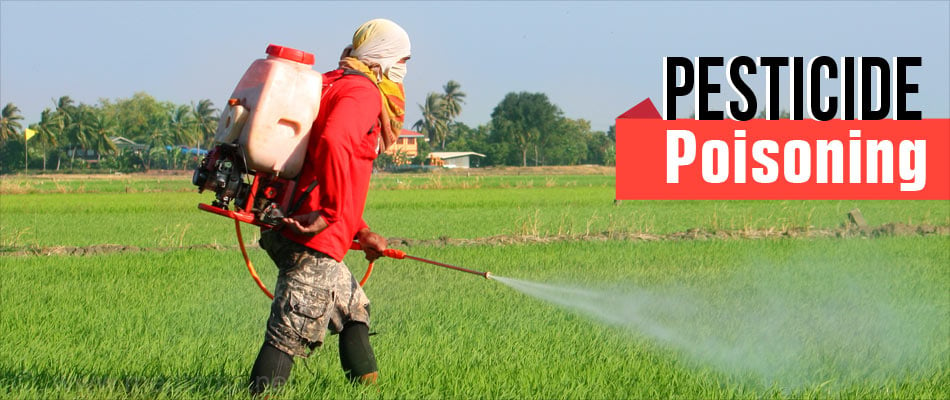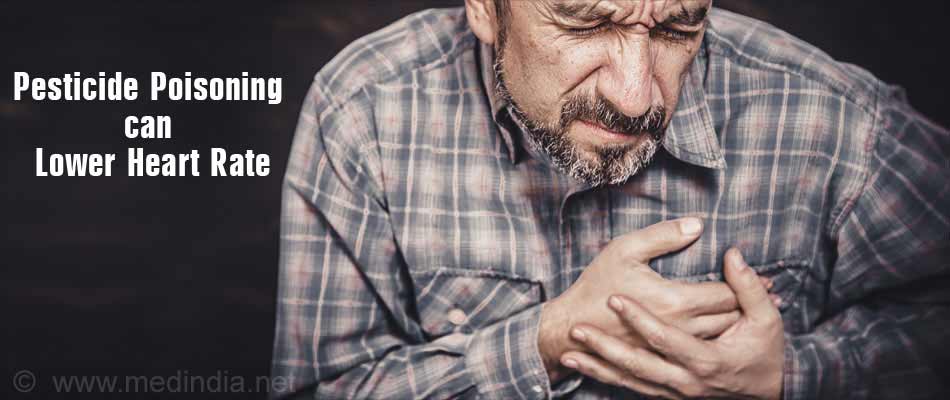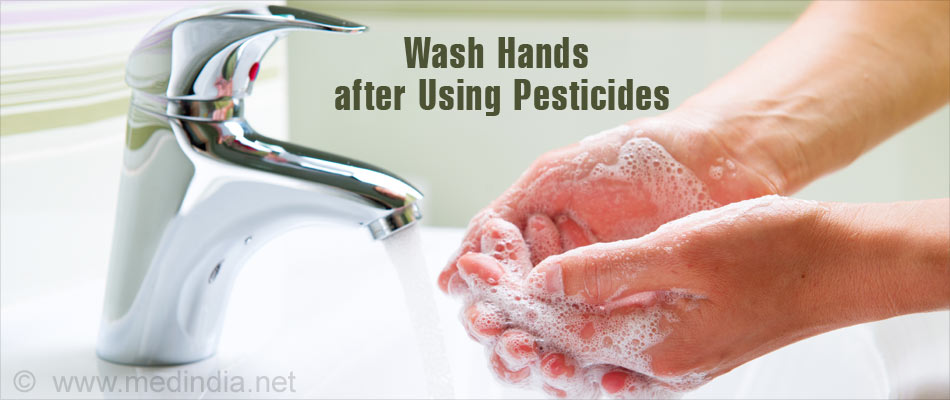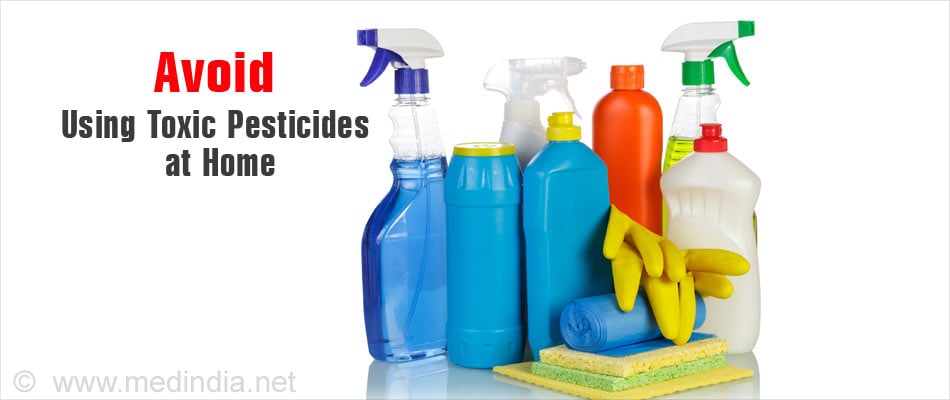- Treatment for Pesticide Poisoning - (http://en.hesperian.org/hhg/a_community_guide_to_environmental_health:treatment_for_pesticide_poisoning)
- Pesticide poisoning - (https://en.wikipedia.org/wiki/pesticide_poisoning)
- Insecticide poisoning - (https://www.nlm.nih.gov/medlineplus/ency/article/002832.htm)
- Pesticide Safety Tips - (https://www.epa.gov/pesticide-incidents/pesticide-safety-tips)
- Protecting Children from Pesticides: Information for Parents - (https://www.healthychildren.org/english/safety-prevention/all-around/pages/protecting-children-from-pesticides-information-for-parents.aspx)
- Symptoms of Pesticide Poisoning - (http://psep.cce.cornell.edu/tutorials/core-tutorial/module09/index.aspx)
What is Pesticide Poisoning?
Pesticide poisoning is a type of poisoning brought by chemicals like carbamates and phosphates, which are actually used for control of pests. These chemicals can cause harm to humans, wildlife or bees.
A person can be exposed to these compounds in various ways like inhalation, ingestion and skin contact. It is one of the most commonly used method for committing suicide especially in developing countries.

What are the Causes Pesticide Poisoning?
Most common causes are:
Accidental or Suicidal Poisonings
Poisoning oneself with agricultural pesticides is a major public health problem and accounts for 1/3rd of all suicide cases globally. Stress is a major factor where most cases of intentional pesticide poisoning are noted and availability of pesticides raises the incidence.
Occupational Exposure
As pesticides are used in many industries, its extensive use can lead to increased risk for pesticide illnesses. For instance, in retail stores, workers are at risk of exposure as pesticides are commercially available. In case of firefighters and police officers, they are at risk as they are the first responders to accidental cases.
Therefore, different job functions can have various exposure levels. Occupational exposures can be caused by absorption through face, hands, forearms and chest and sometimes through inhalation of sprays in closed environments like greenhouses.
Residential
This form of poisoning is caused by long-term low-level exposure. In this case, low levels of pesticide residues in food, air, soil, plants, animals, and sediment and food materials are the cause.
What are the Symptoms of Pesticide Poisoning?
Poisoning may affect different body parts as below:
| System | Difficulty |
| Lungs | Breathing problems |
| Nervous | Anxiety, coma, convulsions, dizziness, headache |
| Skin | Irritation, redness/swelling, blue lips and finger nails |
| Bladder & Kidney | Excessive urination |
| Eyes, Ears, Nose, Throat | Increased salivation, small pupil size, more tears |
| Gastrointestinal | Cramps in abdomen, diarrhea, appetite loss, vomiting, nausea |
| Heart & Blood | Lowered heart rate |
| Muscle | Spasms |

Poisoning can lead to serious consequences if touched without gloves or if you do not wash hands after exposure. It can also lead to life-threatening paralysis and even death in some cases.
How do you Diagnose Pesticide Poisoning?
As pesticide-related illness show similar signs and symptoms like common medical conditions, therefore, complete detailed environmental and occupational history is necessary for its accurate diagnosis. A detailed questionnaire about patient's environment and workplace can give and extent of potential pesticide poisoning.
In the case of carbamate and organophosphate poisoning, baseline cholinesterase test is required. If baseline test is done and poisoning is suspected, then the extent of the problem is identified by comparing baseline level with present cholinesterase level.
How do you Treat Pesticide Poisoning?
Treatment is specific and often dependent on pesticide type or class. However, basic management techniques apply to most acute poisonings. If pesticide is encountered on the body:
Remove the person from the source of exposure to prevent further poisoning. It is also important that the person taking care of the victim should also take necessary precautions to prevent contact exposure.
On the Clothes
- Remove the clothing that pesticides are spilled on.
- Wash off the pesticide on the skin at the earliest with soap and cold water.
Eye
- If spilled into the eye, then rinse the eye with clean water for 15 minutes

On Skin
If skin is burnt from pesticides:
- Keep that part of skin under running tap water
- Rinse well with cool water
- Don't remove anything stuck to the burnt part
- Restrict applying lotions or ointment
- Stop from breaking blisters and removing of loose skin
- Apply sterile dressing, if available and cover it thoroughly
- If pain persists, seek medical help.
Swallowing of Pesticides
If person is:
- Unconscious, then lay them on the side and make sure they are breathing.
- Not breathing, then do mouth to mouth breathing, but take care by keeping mask or piece of cloth or thick plastic wrap with a hole in the center as giving mouth-to-mouth may affect you as well.
- Read the label of pesticide as this will tell if person needs to be vomited or not
- Seek medical help and take along pesticide label or name with you.
- If the person can drink, then give them lots of clean water as soon as possible.

Do NOT
- Vomit, if the label says not to, as pesticide may contain gasoline, xylene, kerosene or other petroleum based products. Vomiting may make problems worse.
- Vomit or drink, if the person is unconscious, confused or agitated.
Do
- If you are sure that vomiting is ok, then give the person a glass of salty water or two tablespoons of strong tasting edible plant like basil, celery or local herb, and then later on about 2 glasses of warm water.
- Ask the person to move, as this can help make him vomit sooner.
- Once vomited, activated or powdered charcoal can help absorb available poison in the stomach.
Breathing of Pesticide
- Take the person away from the area where the pesticide has spread, especially if the area is enclosed.
- Loosen the cloth for easier breathing.
- Make him sit with head and shoulders raised.
- If unconscious: lay that person on the side and make sure that breathing is not blocked.
- If person is not breathing, do mouth-to-mouth breathing
- Seek medical help and take along pesticide name or label along with you.
A drug which counteracts the poison may be given as an antidote. The dosage will be decided based on the amount ingested and the severity of symptoms. In case of ingestion or breathing of the toxin, endoscopy or bronchoscopy may be needed to check for extent of internal burns.
Prognosis of Pesticide Poisoning
Removing the victim from the source, thorough washing of the exposed parts and shifting to a medical centre are the three most prior steps in treatment. If these steps are done without any time lapse, then the chances of survival of the victimare high.
First 4-6hrs is crucial, if there is an improvement in the symptoms in this time then the victim’s survival rate increases. But in general, it is harder to recover from an organophosphate poisoning than other pesticides. Hence, the name of the exposed compound is necessary.
How do you Prevent Pesticide Poisoning?
| Acts | Measures to be Adopted |
| Accidental poisonings | Label and store containers appropriately. |
| Handling/application |
|
| Acute poisonings | Restrict accessibility or adopt methods to prevent its access, like control programs by the government. |
| Over usage | Designated locations in rural areas and cities for safely storing of pesticides |
Health Tips
Pesticides can be useful, but also dangerous if not used carefully or stored improperly, here are some useful tips:
- Don't use non-chemical control methods for reducing or eliminating pest problems.
- Around home, include measures such as:
- Remove food and water sources (like leaky pipes)
- Destroy pest shelters and breeding sites (like litter and plant debris)
- Read the label first and use it accordingly as per instructions on the label.
- Use protective measures necessary for handling, like wearing gloves, long-sleeved shirts, long pants and masks.
- Change clothes and wash hands immediately after pesticide application.

- Don't spray pesticides on windy or rainy days.
- Take extreme precautions so that pesticide doesn't drift or run off into a vegetable garden, pool or in the neighborhood.
- Cover or remove all food items nearby before application.
- Remove children items such as toys, pets before indoor and outdoor use of pesticide and keep these articles away until pesticide has completely dried off as per label instructions.
- Don't buy more pesticides unless required. If leftover pesticides are prevailing, check with the local authority for its proper method of disposal. If no authority then check instructions for disposal as mentioned on the label.
- Keep the local telephone number of area poison control handy.
Tips for Parents
- Use chemical free control products or least toxic methods for household purposes and garden pests.
- Approach school authorities and encourage the use of least toxic pesticides products for the benefit of children.
- Talk with your child's pediatrician on lice control without pesticides.
- If working with pesticides, don't take clothes and shoes into the home. Change clothes before coming home and store shoes outside.
- Avoid using toxic pesticides in your home, gardens and children’s playing area.







